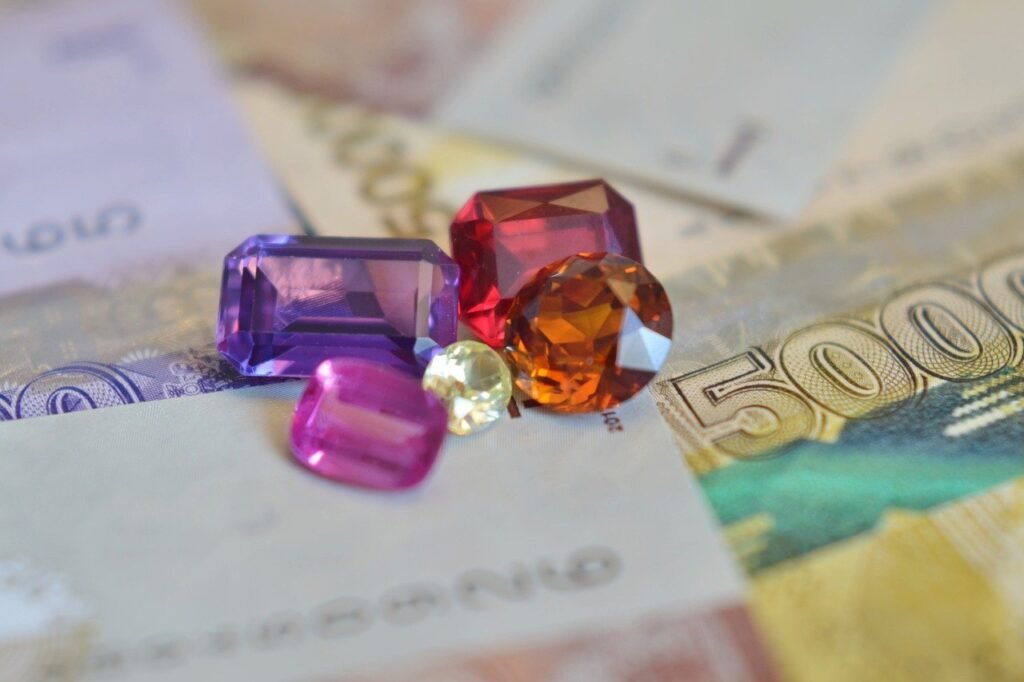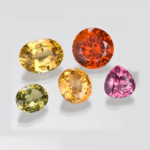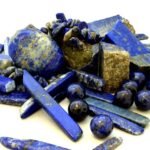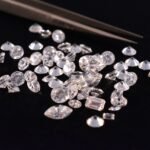Introduction
Precious gemstones are nature’s finest masterpieces rare, radiant, and eternally captivating. Formed deep within the Earth’s crust over millions of years, these treasures represent luxury, power, and timeless beauty. From the brilliance of Diamonds to the fiery glow of Rubies and the lush green of Emeralds, each gem carries a unique story of origin, meaning, and energy. Adored across the USA, UK, Canada, and Australia, these stones symbolize status, love, and spirituality. Whether you’re a collector, investor, or jewelry enthusiast, understanding precious gemstones helps you appreciate their rarity, healing benefits, and enduring global appeal.
What Are Precious Gemstones?
Precious gemstones are the most valuable and sought after minerals on Earth, prized for their rarity, brilliance, and enduring beauty. Traditionally, four gems Diamond, Ruby, Sapphire, and Emerald are classified as “precious” due to their exceptional quality and global demand. These stones are measured by the 4Cs: Cut, Color, Clarity, and Carat, which determine their beauty and market value. Beyond luxury, each gem carries symbolic meanings and healing energies, connecting wearers to love, strength, wisdom, and prosperity. Found in select regions across Africa, Asia, and South America, these natural wonders have shaped royal jewelry collections, ancient rituals, and modern fine jewelry. Whether worn for elegance or spiritual protection, precious stones remain timeless icons of nature’s artistry.
Top 4 Most Precious Gemstones in the World
Diamond – The Symbol of Purity and Eternal Love
The Diamond is the most coveted gemstone, celebrated for its unmatched brilliance, hardness, and timeless beauty. Formed under extreme pressure deep within the Earth, it symbolizes eternal love, clarity, and strength. With a Mohs hardness of 10, diamonds are ideal for everyday wear and are the centerpiece of engagement rings in the USA, UK, Canada, and Australia. Spiritually, diamonds are connected to the Crown Chakra, promoting purity and enlightenment, while Aries and Leo benefit most from its empowering vibrations. Known for their rarity and sparkle, natural white and fancy-colored diamonds remain the ultimate expression of luxury and prestige.
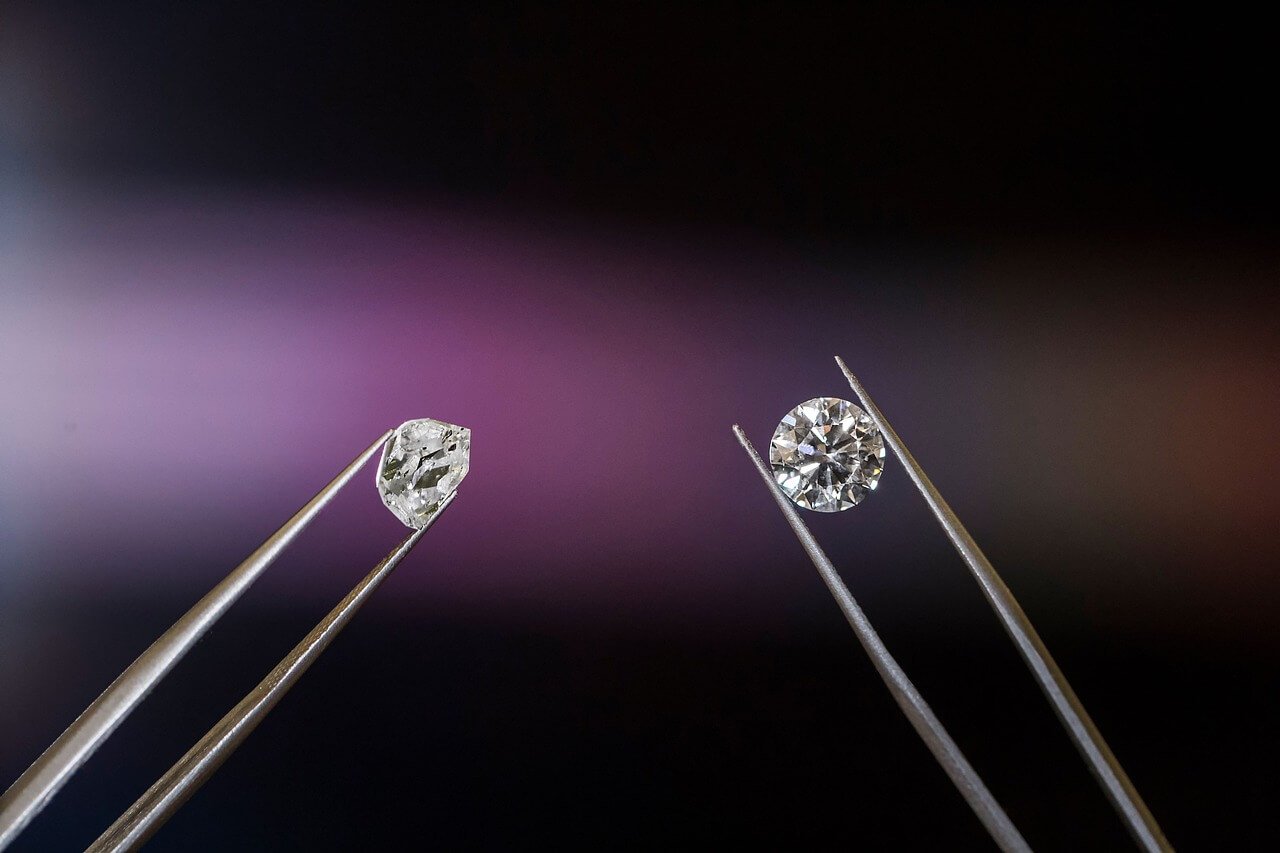
Ruby – The Gem of Passion and Power
The fiery Ruby, from the Corundum family, shines with deep red hues symbolizing love, courage, and life force. Sourced mainly from Myanmar, Mozambique, and Thailand, rubies possess a Mohs hardness of 9, making them durable and vibrant. Believed to activate the Root and Heart Chakras, rubies inspire passion, motivation, and vitality. Leos and Scorpios often wear rubies to enhance confidence and leadership. Known as the “King of Gemstones,” the ruby’s intense glow and emotional warmth make it one of the most valuable and collectible gems in the world.
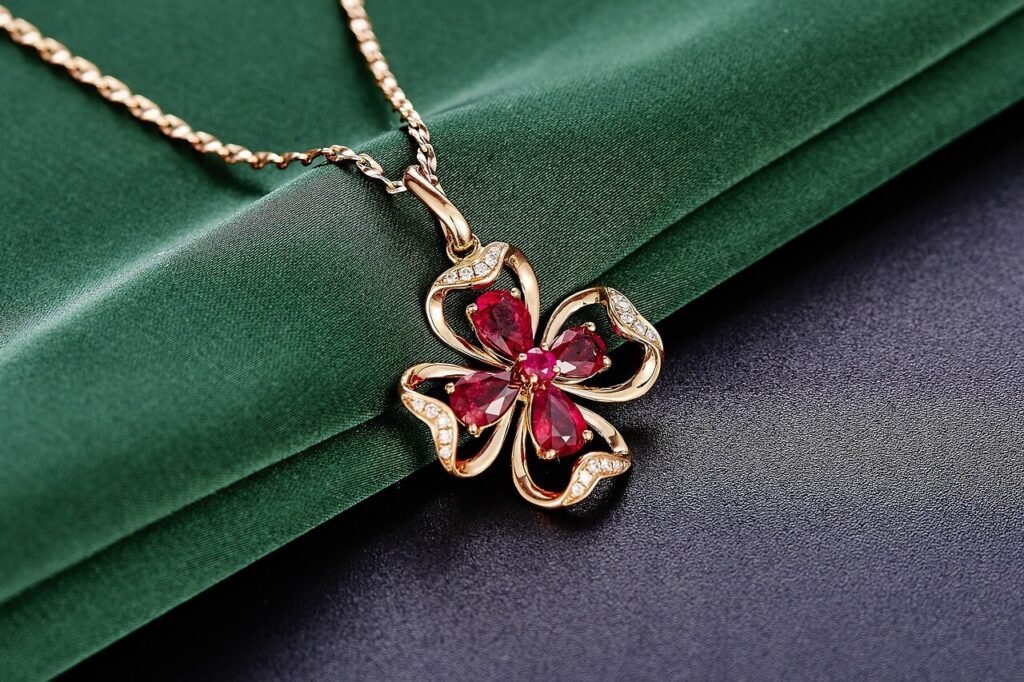
Sapphire – The Stone of Wisdom and Royalty
Sapphire, also from the Corundum family, dazzles with shades of blue, pink, yellow, and even rare padparadscha hues. It represents wisdom, loyalty, and divine favor, often seen in royal jewelry. Mined from Sri Lanka, Madagascar, and Kashmir, sapphires have a Mohs hardness of 9, ensuring durability and brilliance. Associated with the Throat and Third Eye Chakras, this gemstone enhances intuition, clarity, and truth. Virgos and Libras find balance and protection with sapphire’s calming energy, making it a symbol of both elegance and insight across global jewelry markets.
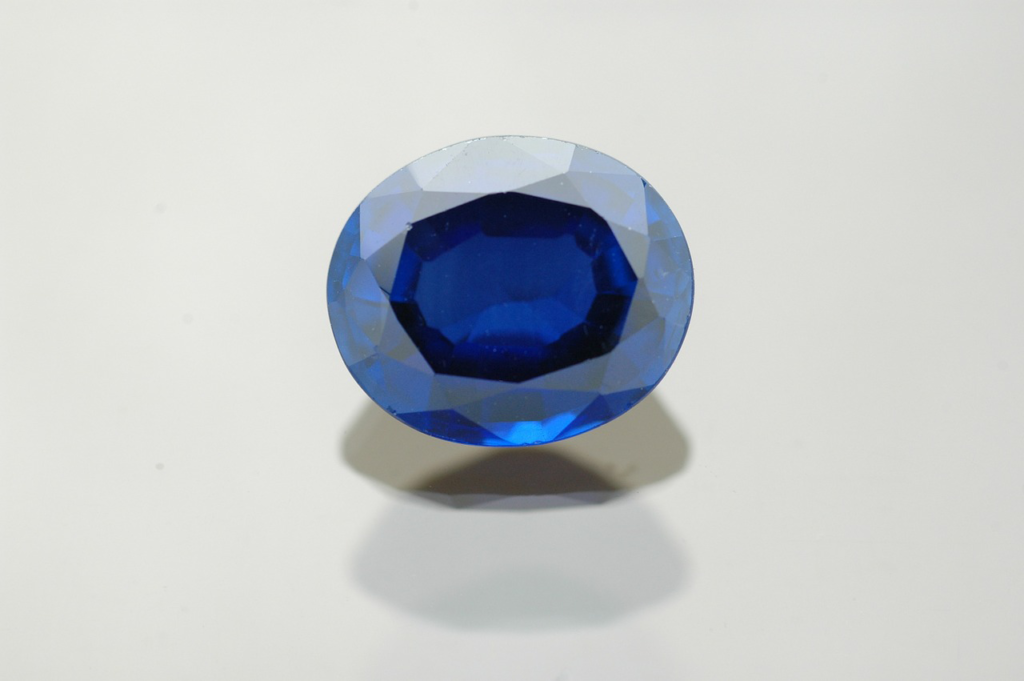
Emerald – The Gem of Growth and Harmony
The mesmerizing Emerald, a member of the Beryl family, is renowned for its lush green hue symbolizing rebirth, prosperity, and love. Primarily found in Colombia, Zambia, and Brazil, emeralds rate 7.5–8 on the Mohs scale and are treasured for their deep, velvety tones. Connected to the Heart Chakra, emeralds nurture compassion, healing, and emotional balance. Taurus and Gemini signs benefit from its soothing energy, promoting harmony and creativity. For centuries, emeralds have graced crowns, engagement rings, and healing talismans, making them a true emblem of luxury and nature’s renewal.
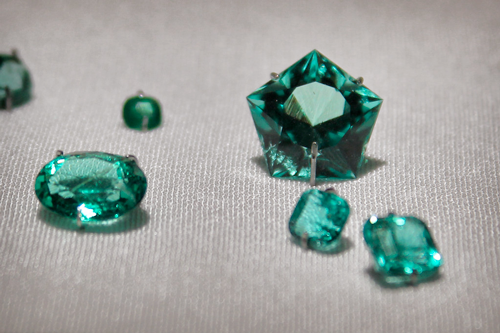
The 4Cs of Gemstone Quality: Cut, Color, Clarity & Carat
Understanding the 4Cs of gemstone quality Cut, Color, Clarity, and Carat is essential for evaluating a gem’s beauty and value. Originally developed for diamonds, these standards now guide the appraisal of all precious gemstones. The cut determines brilliance, sparkle, and symmetry, while color influences value, with vivid, evenly distributed hues like the deep red of Rubies or rich blue of Sapphires commanding top prices. Clarity assesses inclusions; flawless diamonds rank highest, while minor inclusions in Emeralds are accepted as natural charm. Carat measures size, affecting rarity and cost, but exceptional cut and color often outshine larger stones. Knowledge of the 4Cs helps buyers in the USA, UK, Canada, and Australia make informed, confident gemstone purchases.
Where Do Precious Gemstones Come From?
Precious gemstones are formed deep within the Earth over millions of years through heat, pressure, and mineral crystallization. Each gem reflects a story of geology, rarity, and cultural significance. The finest Diamonds come from Botswana, South Africa, and Canada, while Rubies dazzle from Myanmar and Mozambique. Sapphires are sourced from Sri Lanka, Kashmir, and Madagascar, and Emeralds from Colombia and Zambia, renowned for their vivid green color. Rare gems like Tanzanite are found only in Tanzania, and Paraiba Tourmaline shines uniquely from Brazil and Mozambique. These origins shape a gemstone’s color, clarity, and character, making provenance vital for collectors and jewelers in the USA, UK, and Australia. Understanding global gem sources shows how nature transforms raw minerals into precious stones that symbolize love, power, and timeless beauty.
Symbolism & Meaning of Precious Stones Through History
Throughout history, precious gemstones have symbolized power, protection, and divine favor across every civilization. In ancient Egypt, Emeralds represented fertility and rebirth, while Rubies in India symbolized passion and protection from evil. The Romans believed Diamonds were tears of the gods, granting strength and invincibility in battle. During the Middle Ages, Sapphires were cherished by clergy as symbols of faith and purity, often worn in sacred rings and crowns. In Chinese culture, Jade was considered more valuable than gold, representing virtue and eternal harmony. Over time, these stones transcended their aesthetic beauty, becoming emblems of spiritual wisdom, love, and wealth. Even today, modern collectors in the USA, UK, Canada, and Australia wear gemstones not just for elegance, but to connect with their ancient symbolic energy a tradition that continues to inspire both luxury and spirituality.
Healing Properties & Chakra Connections of Precious Gems
Beyond their beauty, precious gemstones are deeply connected to the body’s energy centers, known as chakras, promoting physical, emotional, and spiritual harmony. The Diamond, linked to the Crown Chakra, amplifies clarity, purity, and divine consciousness, making it ideal for meditation and manifestation. Ruby, tied to the Root Chakra, stimulates passion, vitality, and courage, helping overcome fear and fatigue. Sapphire resonates with the Throat Chakra, encouraging truth, communication, and inner peace, while Emerald balances the Heart Chakra, nurturing compassion, love, and healing energy. For spiritual transformation, Alexandrite harmonizes the Heart and Crown Chakras, guiding emotional balance and awareness. Each precious gem radiates unique vibrational frequencies that align with specific chakras, promoting balance and well-being. Whether worn as jewelry or used in crystal healing, these gemstones continue to attract modern enthusiasts across the USA, UK, Canada, and Australia who seek to blend luxury with spiritual wellness.
Zodiac Birthstone Connections of Precious Gemstones
Every zodiac sign resonates with a precious gemstone that amplifies its traits and brings energetic balance. Aries shines with Diamonds for strength and courage, while Taurus finds stability and love through Emeralds. Gemini connects with Alexandrite for adaptability, and Cancer harmonizes with Pearls, symbolizing purity and intuition. Leo thrives with Ruby, boosting confidence, while Virgo aligns with Sapphire for wisdom and clarity. Libra enjoys serenity from Opal, Scorpio benefits from Topaz and Spinel, and Sagittarius resonates with Tanzanite for insight. Capricorn draws grounding from Garnet, Aquarius is guided by Paraiba Tourmaline, and Pisces embraces Jadeite Jade for calm and compassion. Collectors and astrology enthusiasts in the USA, UK, Canada, and Australia choose these gemstones not only for beauty but also for their alignment with cosmic energy and personality.
The Value and Market of Precious Gemstones
The value of precious gemstones depends on several factors, including rarity, size, quality, and origin. Some gemstones, such as Kashmir sapphires and Burmese rubies, command premium prices due to their historical significance and exceptional quality. Gem certification by institutions like the Gemological Institute of America (GIA) and the International Gem Society (IGS) ensures authenticity and boosts a gemstone’s market value.
Precious Gemstones in Jewelry
Birthstone jewelry, engagement rings, and luxury accessories feature precious gemstones as the centerpiece. Diamond rings, ruby pendants, sapphire earrings, and emerald bracelets remain timeless choices. Custom and antique jewelry featuring precious gems is also in high demand, offering unique craftsmanship and history.
How to Identify Real Precious Gemstones (vs. Imitations)
In today’s jewelry market, knowing how to distinguish real precious gemstones from imitations is essential for both collectors and buyers. Genuine gemstones display natural inclusions, unique color zoning, and brilliance that synthetic or glass stones cannot replicate. Professional gemological testing including refractive index, specific gravity, and magnification analysis is the most reliable way to confirm authenticity. Genuine Diamonds sparkle with sharp light dispersion, while fake ones often show dull reflections. Similarly, Rubies and Sapphires may contain fine inclusions known as “silk,” which actually enhance their natural identity. Always request certification from trusted labs such as GIA, IGI, or AGS, ensuring your gem’s origin, treatment, and authenticity are documented. For buyers in the USA, UK, Canada, and Australia, purchasing from verified dealers or reputable online platforms ensures you receive authentic gemstones with guaranteed value and transparency.
Caring for Your Precious Gemstones – Cleaning & Storage Tips
Proper care ensures precious gemstones retain their brilliance, energy, and longevity. Different gems have varying hardness levels on the Mohs scale, requiring specific cleaning methods. Diamonds, the hardest natural stone, can be safely cleaned with mild detergent and warm water, while Emeralds should avoid ultrasonic cleaners due to internal fissures. Always use a soft cloth or brush to remove dirt and oils, and store each gem separately in padded boxes or pouches to prevent scratches, especially softer stones like Opal, Pearl, or Tanzanite. Avoid harsh chemicals, direct sunlight, and extreme heat, which can damage color or clarity. Energetically, many cleanse gemstones with moonlight, saltwater, or sage smoke to restore spiritual energy, particularly for chakra or healing practices. Consistent care preserves both the beauty and metaphysical power of your Sapphire rings, Emerald pendants, and other precious stones.
Top Countries Where Precious Gemstones Are Found
The world’s most exquisite precious gemstones come from regions of rich geological diversity. Myanmar (Burma) is famous for its legendary Rubies, prized for the deep “pigeon blood” red symbolizing love and passion. Sri Lanka, the Gem Island, produces brilliant Sapphires, Spinel, and Alexandrite in vivid colors. Colombia is renowned for its emeralds, regarded as the purest green stones on Earth. Brazil offers topaz, amethyst, and aquamarine, while Tanzania is the exclusive source of tanzanite. South Africa provides exceptional diamonds and tourmaline, and Thailand and India are key hubs for cutting and trading, turning raw stones into fine jewelry. Understanding a gemstone’s origin adds cultural, historical, and investment value. Collectors and enthusiasts in the USA, UK, Canada, and Australia often trace provenance to ensure authenticity and enhance their gems’ beauty and worth.
Symbolism and Metaphysical Powers of Precious Gemstones
Every precious gemstone carries an ancient story of power, protection, and divine energy. Beyond their physical beauty, these stones are believed to hold vibrational frequencies that influence the mind, body, and spirit. For centuries, royalty and healers have used gemstones not only as symbols of wealth but also as tools for spiritual balance and emotional clarity. Each gem resonates with specific chakras and zodiac signs, enhancing one’s energy flow and inner strength.
Diamond — Crown Chakra & Zodiac: Aries, Leo, Libra
The diamond, representing purity and perfection, connects with the Crown Chakra, promoting clarity, spiritual awakening, and enlightenment. It enhances love, abundance, and inner strength, making it ideal for Aries, Leo, and Libra individuals. Ancient kings believed diamonds amplified courage and divine favor, while modern healers view them as a symbol of unbreakable energy.
Ruby — Root & Heart Chakra | Zodiac: Cancer, Leo, Scorpio
The fiery ruby radiates vitality, courage, and passion. It balances the Root and Heart Chakras, enhancing life force and emotional depth. For Cancer, Leo, and Scorpio, it brings motivation and protection from negativity. Rubies have long been worn to attract love, power, and prosperity the heartbeat of regal strength and eternal devotion.
Sapphire — Throat & Third Eye Chakra | Zodiac: Virgo, Libra, Sagittarius
A gem of wisdom and truth, the sapphire stimulates the Throat Chakra, encouraging honest communication and spiritual insight. It also opens the Third Eye Chakra, deepening intuition and focus. Ideal for Virgo, Libra, and Sagittarius, sapphire symbolizes divine protection, loyalty, and mental clarity.
Emerald — Heart Chakra | Zodiac: Taurus, Gemini
Known as the “Stone of Successful Love,” the emerald harmonizes the Heart Chakra, encouraging compassion and trust. For Taurus and Gemini, it inspires creativity and renewal. In ancient lore, emeralds represented rebirth and wisdom their vibrant green energy still resonates with those seeking emotional healing and balanced relationships.
Famous Precious Gemstones in History and Mythology
Throughout history, precious gemstones have been shrouded in mystery, power, and fascination. Each legendary gem has inspired tales of royalty, fortune, and even curses captivating collectors, gemologists, and historians alike. From royal treasuries to modern museums, these world-famous stones remind us that every gem carries a unique story that transcends time and culture.
The Hope Diamond – A Symbol of Mystery and Royal Legacy
One of the most famous blue diamonds in the world, the Hope Diamond weighs 45.52 carats and is renowned for its deep, mesmerizing color and rumored curse. Originating from India’s Golconda mines, it once belonged to French royalty before finding its home in the Smithsonian Institution (USA). Beyond its beauty, it symbolizes power, protection, and transformation, making it a true marvel of gemological and historical significance.
The Sunrise Ruby – Passion and Divine Energy
The Sunrise Ruby, weighing 25.59 carats, is one of the most valuable rubies ever sold at auction. Originating from Myanmar (Burma), it radiates with vivid pigeon blood red color a hue representing passion, life force, and courage. This gem resonates deeply with the Root and Heart Chakras, embodying fiery strength and emotional depth revered by royalty and collectors across the globe.
The Star of India – Celestial Beauty in Sapphire Form
The Star of India, a magnificent 563-carat blue star sapphire, is one of the largest and most flawless of its kind. Its six-rayed star, caused by asterism, reflects divine protection and spiritual guidance. Discovered in Sri Lanka, this gemstone connects to the Throat and Third Eye Chakras, promoting clarity, truth, and inner peace qualities long associated with the celestial and divine.
The Mogul Emerald – Emblem of Royal Wisdom
Carved in 1695 during the Mughal Empire, the Mogul Emerald weighs an astounding 217.80 carats. It features intricate Arabic inscriptions of prayers and blessings, symbolizing spiritual power and divine protection. Associated with the Heart Chakra, it brings emotional healing, compassion, and prosperity admired by collectors and historians for both its beauty and cultural importance.
Frequently Asked Questions (FAQs)
Diamonds, Rubies, Sapphires, and Emeralds are highly valued worldwide, especially in the USA, UK, Canada, and Australia, for their rarity, brilliance, and investment potential.
Check lab certificates (GIA, IGI), natural inclusions, and clarity. Professional testing ensures authenticity, vital for buyers in the USA, UK, Canada, and Australia.
Aries – Diamond, Taurus – Emerald, Gemini – Alexandrite, Cancer – Pearl, Leo – Ruby, Virgo – Sapphire, Libra – Opal, Scorpio – Topaz, Sagittarius – Tanzanite, Capricorn – Garnet, Aquarius – Paraiba Tourmaline, Pisces – Jadeite.
Diamond (Crown) – clarity, Ruby (Root/Heart) – vitality, Sapphire (Throat/Third Eye) – wisdom, Emerald (Heart) – love. They support emotional, spiritual, and chakra balance.
Diamonds – Botswana, South Africa; Rubies – Myanmar, Mozambique; Sapphires – Sri Lanka, Kashmir; Emeralds – Colombia, Zambia. Others come from Brazil, Tanzania, and Thailand.
Clean with mild soap, store separately in padded boxes, and avoid heat, chemicals, or sunlight. Proper care preserves beauty and energy.
Yes, rare stones like Tanzanite, Paraiba Tourmaline, and Alexandrite can gain value over time, especially if certified.
Yes, gemstones align chakras, promote balance, and support emotional and spiritual growth for meditation and wellness practices.
Precious: Diamond, Ruby, Sapphire, Emerald – rarer and more valuable. Semi-precious: Amethyst, Citrine, Peridot – abundant but still prized for beauty and healing.
Purchase from certified dealers in the USA, UK, Canada, and Australia with lab certificates to ensure authenticity and quality.
Conclusion: The Timeless Appeal of Precious Gemstones
Precious gemstones are more than mere jewelry they are nature’s masterpieces, carrying history, symbolism, healing energy, and investment value. From the dazzling Diamond to the passionate Ruby, the calming Sapphire, and the revitalizing Emerald, each gem tells a unique story of beauty, rarity, and cosmic energy. Whether you are a collector, investor, or jewelry enthusiast in the USA, UK, Canada, or Australia, understanding a gemstone’s origin, quality, chakra connection, and zodiac alignment enhances both appreciation and value. By choosing authentic, well-cared-for stones, you are not just adorning yourself with luxury, but connecting with centuries of tradition and natural wonder. Explore our guides to dive deeper into the world of precious gemstones and make informed choices that last a lifetime.
